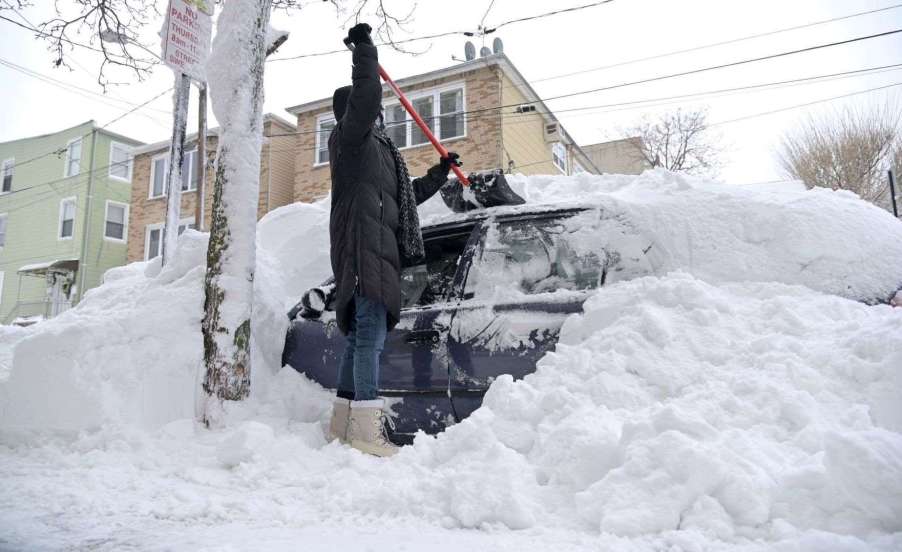
How Long Can an Electric Vehicle Warm a Cabin in Cold Weather?
During cold winter weather, we can stay toasty warm inside our homes. However, it’s more of a challenge to stay warm while driving our cars. A worst-case scenario is if a driver would get stranded in a snowstorm. There’s a great deal of uncertainty about how cold weather affects EVs. This begs the question: How long can an electric vehicle warm a cabin in cold weather?
Is an EV better or worse than a gas-powered car for warming up a cabin in cold weather?

Car and Driver recently tested a 2019 Tesla Model 3 Long Range against a 2022 Hyundai Sonata N-Line to see if an EV is better or worse than a gas-powered car for warming up a car in cold weather. The folks at Car and Driver were inspired to do this test after a recent snowstorm closed down Interstate 95 in Virginia for more than 24 hours. They wanted to find out if “getting stuck in a traffic jam during subfreezing temperatures is more difficult in an electric vehicle.”
Tesla Model 3 vs. Hyundai Sonata: Cold weather cabin warming test

For the cold weather test, which was conducted in Ann Arbor, Michigan, Car and Driver set the climate control systems in the Model 3 and Sonata at 65 degrees Fahrenheit, and then let the two vehicles sit. Initially, the outside temperature was 26 degrees and later dropped down to 9 degrees. The average temperature during the test was around 15 degrees.
For the Model 3, Car and Driver placed it in Camp Mode, which keeps the climate control system running while the electric vehicle is parked. For the Sonata, they had to make some unique adjustments. First, Car and Driver disabled the auto shut-off function, since the Sonata normally shuts off automatically after idling for 30 to 60 minutes. Also, out of fear that the running lights on the Sonata would upset the neighbors during the night, they taped over them.
Electric vehicle vs. gas-powered car cabin warming test results
The results of the cabin electric vehicle vs. gas-powered car cabin warming test were mixed. Based on the analysis, the Tesla Model 3 could warm up a cabin for up to 45.1 hours before running out of power. In comparison, the Hyundai Sonata could warm up a cabin for up to 51.8 hours before running out of fuel.
However, the Model 3 is considerably more efficient than the Sonata at warming up a car during cold weather. It consumed battery power at a rate of 1.6 kWh per hour. In comparison, the Sonata burned fuel at a rate of 10.3 kWh per hour.
While the results showed what happened in a controlled test environment, what happens in a real-world scenario during the winter might be different. For one, the Model 3 started with a 98% charge, while the Sonata had a full tank of gas. This might not be the case if one were out driving and then stranded in a snowstorm. Also, an even colder outside temperature might put a greater energy strain on the climate control system. Furthermore, setting the climate control system at either a higher or lower temperature might change things as well.
However, as Car and Driver noted, “EVs aren’t necessarily much worse off [than a gas-powered car] in a cold-weather-disaster scenario.” The Model 3 could warm up a cabin for up to 45.1 hours. This is over two days and presumably long enough to buy time until roadside assistance arrives.


